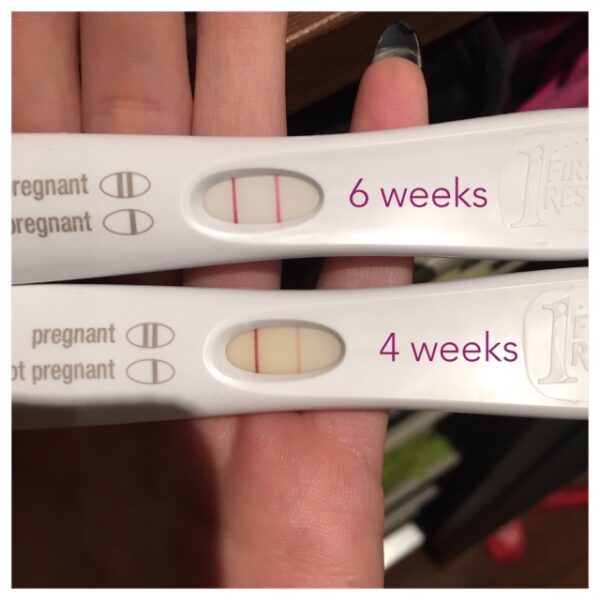Dye Stealer Pregnancy Test: Meaning & What It Indicates - Explained
Ever heard of a "dye stealer" and wondered what all the fuss is about? Its a term that sparks excitement and curiosity in the world of early pregnancy, often suggesting a thriving start, but the reality is nuanced.
A dye stealer, in the context of a home pregnancy test, is a visually striking phenomenon. It's when the test line, the one that indicates a positive result, becomes noticeably darker than the control line. This isn't just a strong positive; its a statement. It signals a high concentration of human chorionic gonadotropin (hCG) in the urine, a hormone produced by the placenta shortly after implantation. While it might feel like a definitive indicator of a healthy pregnancy, the interpretation is more intricate.
To understand the "dye stealer" effect, we need to delve into how these tests function. Pregnancy tests detect hCG, which is produced by the developing placenta. The test strips contain antibodies that bind to hCG. When the urine, which contains hCG, is applied to the test, the hormone binds to these antibodies. If the hCG levels are high enough, the test line appears darker because theres a greater concentration of hCG interacting with the antibodies, thus "stealing" or borrowing dye from the control line in the process. Essentially, a dye stealer indicates the presence of a significant amount of the hormone in your system.
Heres a breakdown of what a dye stealer pregnancy test entails. It is important to know that this is not a universal standard. Not all tests are designed to display this effect, and the test line may have a maximum intensity. Additionally, there is often the question of when it can appear. While many women experience a dye stealer around 18 days past ovulation (dpo), or approximately four weeks of pregnancy, the timeline varies. Some women see it sooner, others later, and some never get one at all. The lack of a dye stealer does not necessarily indicate a problem with the pregnancy.
The following table outlines the nuances of the "dye stealer" phenomenon, presenting its meanings, potential implications, and common misconceptions.
| Aspect | Description | Important Considerations |
|---|---|---|
| Definition | A pregnancy test result where the test line is darker than the control line. | Indicates high levels of hCG in urine. |
| Mechanism | High hCG saturates the antibodies on the test strip, pulling dye from the control line. | Not all tests will display this effect. |
| Timing | Often observed around 18 dpo (4 weeks), but can vary. | Timing is not a definitive indicator of pregnancy health. |
| Healthy Pregnancy | Often seen in healthy, progressing pregnancies. | Does not guarantee a healthy pregnancy or its viability. |
| Misconceptions |
| These are not necessarily true. |
| Twins Pregnancy | Since there is more hCG with a twin pregnancy, a dye stealer pregnancy test could be an indication of a twin pregnancy. | Not a guarantee, high hCG can be present in singular pregnancies. |
| Absence of Dye Stealer | Absence of a dye stealer does not always mean there's a problem. | Pregnancies can be healthy without ever showing a dye stealer. |
| Medical Advice | Women who experience a dye stealer should still consult their healthcare provider. | For confirmation and pregnancy monitoring. |
| Medication | Medications containing hCG can cause a false dye stealer result. | Always consider medication use when interpreting results. |
| Test Instructions | Read instructions carefully, some tests may not have a control line. | Essential for accurate test interpretation. |
| Test Line Intensity | Intensity doesn't necessarily correlate with viability or the outcome of the pregnancy. | A lighter test line doesn't mean a problem. |
| False Negative | Some tests show false negatives in later stages of pregnancy with high hCG. | Understand the limitations of the test. |
| Chemical Pregnancy | Miscarriage before 5 weeks is technically a chemical pregnancy. | Miscarriage after that may not be. |
The concept of a dye stealer is often a source of both excitement and anxiety. The excitement stems from the perceived visual confirmation of a strong, healthy start to a pregnancy. Its the thrill of seeing a bold, definitive result. However, the anxiety creeps in because of the fear of what it might or might not indicate. The darker test line, while a positive sign, doesnt guarantee a successful pregnancy. While a strong positive result is generally a good sign, it's not a crystal ball.
One of the primary reasons for the excitement is the potential for early confirmation. The ability of a pregnancy test to detect hCG in urine allows for early confirmation of pregnancy, typically before a missed period. When the test line quickly becomes darker than the control line, it's a compelling visual cue of a strong positive result. This early confirmation provides reassurance and allows expectant parents to start planning and making necessary lifestyle adjustments.
It's essential to differentiate between a "dye stealer" and a "strong positive." A strong positive result shows a clear test line that is as dark or almost as dark as the control line. A dye stealer takes this a step further, where the test line surpasses the control line's intensity. This heightened darkness is what drives the excitement, especially for women trying to conceive. Many women, after weeks or months of trying, find it difficult to resist testing. The stronger, the better! Yet, it's crucial to understand the implications and what the intensity truly reveals. If it's positive, follow up with a healthcare provider for confirmation and proper monitoring of your pregnancy.
One of the most common misconceptions associated with the dye stealer is that it automatically signifies a healthy and viable pregnancy. This is not always the case. While a dye stealer may be an encouraging sign, indicating high levels of hCG, it doesn't guarantee the pregnancys health or its ultimate success. There are instances where women experience miscarriages even after getting a dye stealer, highlighting the fact that the intensity of the test line is not a perfect predictor of pregnancy outcome. A dye stealer does not provide the reassurance some people seek. It can be a good finding and a sign of rising hCG, but it unfortunately cannot provide the guarantee of a healthy and viable pregnancy.
Another misconception is that the presence of a dye stealer indicates a multiple pregnancy, such as twins. While it is true that multiple pregnancies often result in higher levels of hCG, which can lead to a dye stealer, a dye stealer can also occur in a singleton pregnancy. The level of hCG varies greatly from pregnancy to pregnancy, making it difficult to predict with accuracy whether a dye stealer is a sign of multiples. Furthermore, a dye stealer does not imply anything about the quality of the pregnancy or its viability. Women may have dye stealers and still experience pregnancy losses, and others may have healthy pregnancies without ever seeing one. Therefore, while a dye stealer might increase the likelihood of a twin pregnancy, its not a definitive indicator.
The absence of a dye stealer does not necessarily mean there is a problem with the pregnancy. Many healthy pregnancies progress without ever producing a dye stealer effect. HCG levels vary widely, and not all women will experience the same progression. Therefore, the absence of a dye stealer is not necessarily a cause for concern. The absence of a dye stealer should not be interpreted as a negative sign or a predictor of a potential loss. Pregnancy tests are designed to detect hCG, and variations in test results are normal.
The "dye stealer" phenomenon often leads to the question: when is the best time to test? If you're actively trying to conceive, it's best to start testing around the expected period or slightly before. However, a dye stealer is not likely to show up before the hCG levels become high enough. Women often see a dye stealer around 18 days past ovulation (dpo) or approximately four weeks. Remember that not all pregnancy tests are designed to show a dye stealer effect, and some tests may have a maximum intensity for the test line. Many women test too early and do not get a dye stealer, which causes unnecessary anxiety. Further along in pregnancies, at around five weeks, pregnancies are more prone to show a dye stealer result.
As mentioned earlier, the presence of a "dye stealer" does not mean that a pregnancy is healthier or progressing better than a pregnancy with a lighter test line. The intensity of the test line does not correlate with the viability or outcome of the pregnancy. The test line getting progressively darker over a few days indicates that the hCG levels are rising, which is an essential factor for the pregnancy's early development. But what happens if the test line is very dark? Often, a very dark test line can indicate a strong positive result. Some tests show false negatives with very high levels of hCG.
Chemical pregnancies may cause lighter test lines; however, a dye stealer in the early stages is less likely to indicate a chemical pregnancy. A chemical pregnancy is technically a miscarriage that occurs very early. Generally, it's defined as a pregnancy loss before five weeks. Miscarrying later is not a chemical pregnancy. Sometimes, with the early losses, tests remain faint. Other times, the tests get pretty dark, but tracking the process for long is difficult.
If you have taken medications containing hCG, this can lead to a dye stealer result, even if you are not pregnant. In such instances, the test may show an indication of high hCG levels. Therefore, it's important to be aware of any medications containing hCG, as this may influence the interpretation of the test result. Always read the instructions carefully before taking the test.
Pregnancy tests work by detecting the presence of hCG in a womans urine, which can provide early confirmation of pregnancy. To use a dye stealer, you need to hold the absorbent tip in your urine stream or dip it in a cup of collected urine. The control line will be dark as usual. The intensity of the test line does not correlate with the viability or outcome of the pregnancy. The test line shows your hCG levels. Many women obsess over testing to track this progress. The best advice is to always follow up with your healthcare provider for confirmation and monitoring of your pregnancy.


